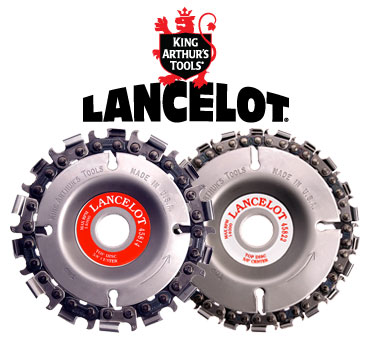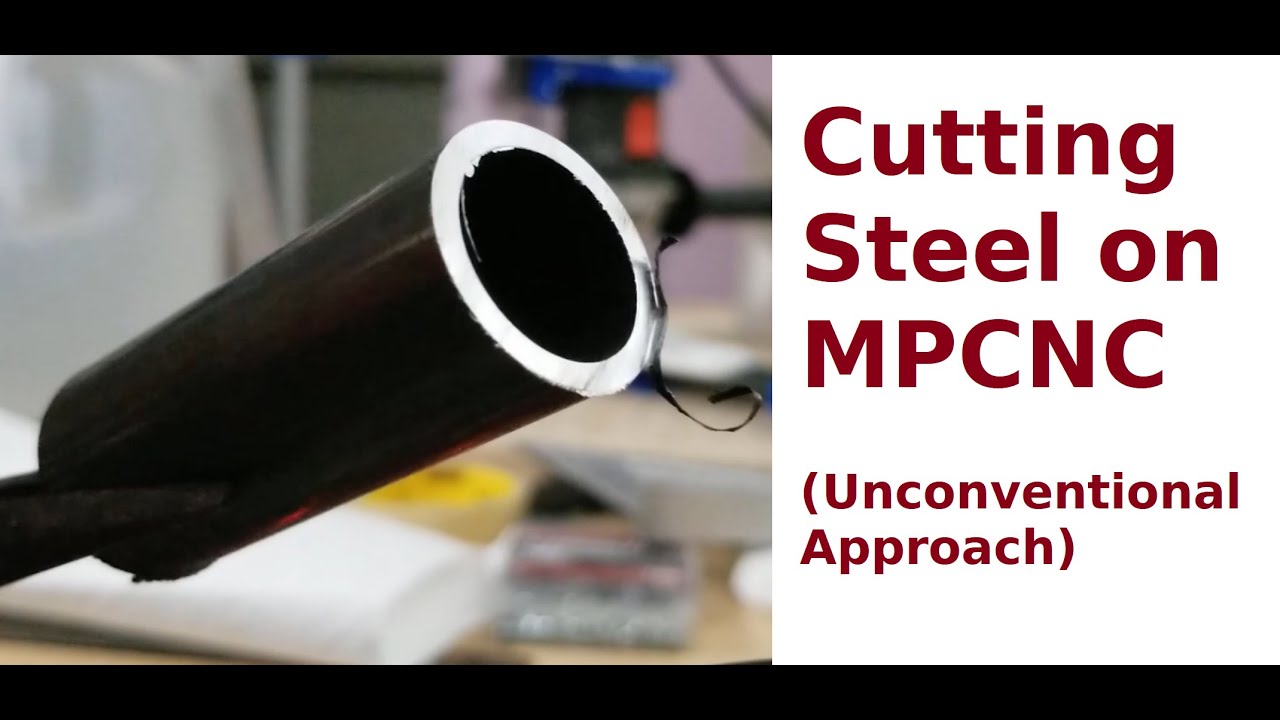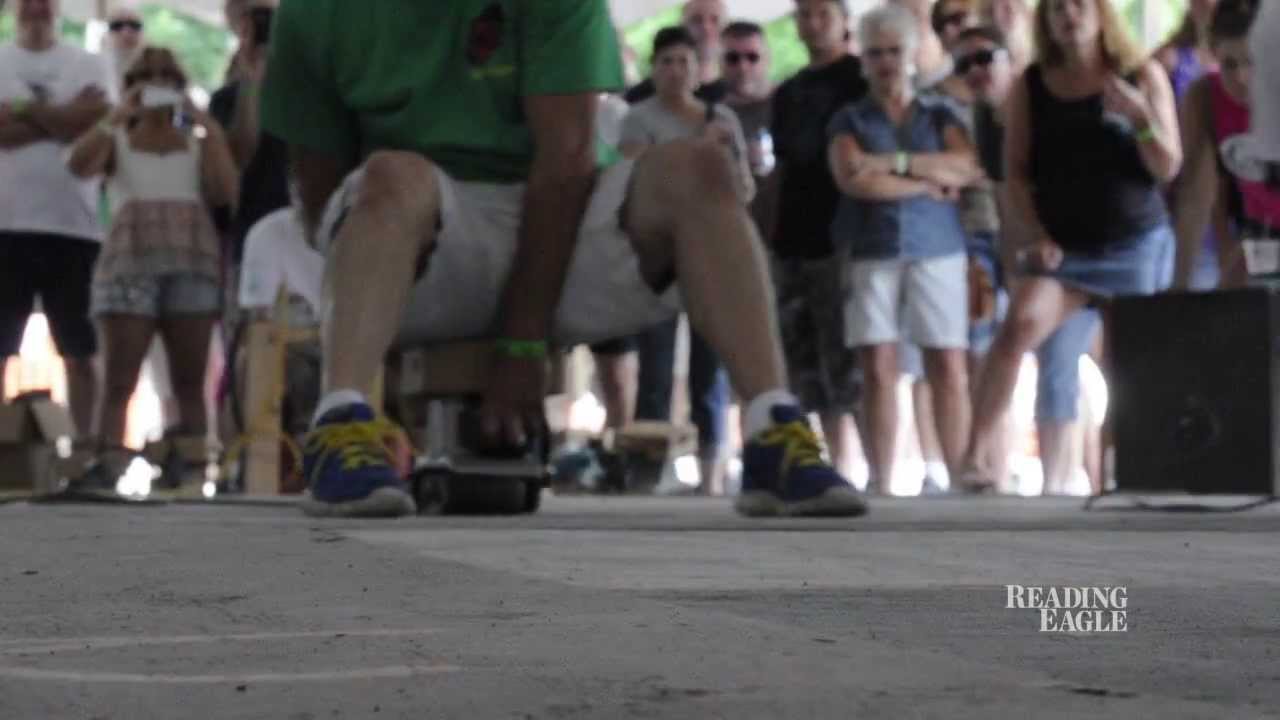How about one of these in the angle grinder…

CNC chainsaw carving anyone?
Hopefully someone else will try this, so I don’t have to…8^)
@jamiek perhaps…hint, hint…nudge, nudge…a nods as good as a wink, eh?
That’s pretty neat. I can’t think about much practical applications for my own use, but this guy was apparently quite creative. I really like the flexible wood plank he made, really cool.
I don’t think it is particularly dangerous either, sure you wouldn’t want to put your finger anywhere near this thing running, but a router is also a very dangerous tool. As long as it it solidly secured to the gantry it should be perfectly fine 
But yeah, it is really impressive and scary though.
Reading this thread I can’t help but think of the old TV show Home Improvement and Tim’s continuing quest for MORE power. 
Sounds like a job for Sandify…
No way in hell I’d put this on a belt machine, but lead screws, yea, it can’t go anywhere without breaking much larger pieces of metal first.
Also;

Also, also, it needs to be on a pivot. Then it could do proper x y cuts.
Someone asked about CAM and the reply was:
Well, as you’ve already guessed, there is no tool profile to simulate a circular saw blade. If you watch the video, there’s a quick clip of the 3D model. Look closely and you can see the spline at the bottom of the cavities. That’s what the saw is following. Basically, it’s a 3D engraving path.
I’m thinking for an arbitrary shape like a topographic map, it should be possible to use minkowski in OpenSCAD to fake an unusual cutter shape. I’ve tried minkowski in the past to add a draft angle to models for casting, the only problem being that OpenSCAD grinds to a halt and can take an hour to render the model. For a thin grinding wheel the diameter also changes a bit while it cuts, so for precision you would want to measure the diameter and feed that into CAM. Probably best to measure once for a roughing operation, then measure again and feed into CAM for the finishing pass.
Minkowski will show you the completed shape if you give it the tool path, but it won’t do anything like give you a path from a shape. Or even more helpful, determine what paths to take to chew away the material without exceeding depth or speed limits.
The increasing danger here comes from kickback. More specifically if things aren’t aligned (if it skips perpendicular to the blade) it can grab very hard into the material (with 10 teeth over a 3" arc of saw blade) and has a very powerful motor. The result will have a lot of energy either throwing the board, breaking and throwing teeth/blade, or breaking the mount and throwing a saw with a power switch zip tied in the on position.
A router is no joke, but it has much less of a change to go from fine to danger in such a spectacular way.
Safety is, counterintuitively, relative. You may have your own precautions or confidence or risk tolerance. But we should always be willing to talk about the potential risks and mitigations to improve people’s chances of evading injuries.
Company policy requires that we…

Throwing the board or runaway saw I don’t see teeth coming out or the blade but a zip tied switch is a problem i saw a belt sander run away that was funny but a runaway saw scary. Kickback is no joke
Well, something’s got to give. I suppose the wood would probably give up way before the saw broke. But if you hit a hold down screw, I wouldn’t guarantee a tooth isn’t going to be jettisoned.
I think minkowski can perform effectively a 3-d “dilation” that converts the desired finished part into the locus of points where the disc center must not enter. From there a normal CAM program can be told it’s using a small ball-end mill (or something).
Depth per pass and feedrates are probably okay, (meaning CAM will do what you tell it) but there are still plenty of risks. You would have to use extreme care if for example you wanted to avoid climb milling and perform only conventional or “sideways-downhill.” Ordinary CAM is going to be oblivious, meaning you would have to babysit the CAM and be subject to an additional degree of human error, of which there is already plenty of opportunity.
What if the goal were to quickly hog out a lot of material and go back for a finishing pass? Suppose you really needed a huge pocket and couldn’t do it by assembling 2D pieces. Fusion or EstlCAM is not going to know that all that material is gone and the toolpath is going to still be 20 hours. I suppose you would need to model the first-stage rough-carved part and then use Fusion’s rest-machining to carve away the big residual fillets.
Yes but a broken mount would be what scares me but I forgot the removel of the guard that so it could be quite devastating flying wood metal and plastic never good
That is a bad thing to show it could slow down the city road crews. Just kidding but way to much time on you hands and impressive. There is a lot of power there a lot more than would seem to be needed

